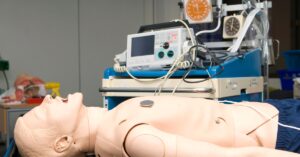It’s never easy to imagine our furry friends in distress, but preparing for emergencies is important, especially when performing CPR. CPR is a technique that pet owners can use on animals to revive them after they’ve stopped breathing or have no pulse. Learning the basics of pet CPR is crucial, so here’s a quick overview of pet CPR administration.
Step 1: Assess the Situation
Before administering CPR, assess the situation carefully. Ensure you and your pet are in a safe environment and free from hazards. A blocked airway or an injury to the neck or spine may require modifications to the CPR technique. You can go directly to rescue breathing if your pet shows signs of consciousness, such as blinking, panting, or twitching. Keep reading to learn how to check for a pulse if there’s no sign of breathing.
Step 2: Check for a Pulse
Press two fingers on the inside of your pet’s knee, or behind their “elbow,” to check for a pulse. Start doing chest compressions immediately if you don’t detect a pulse.
Step 3: Perform Chest Compressions
Lay your pet on its side on a flat, firm surface. Place one hand on top of the other and interlace your fingers. Position your hands over your pet’s ribcage behind their front legs. Press down firmly and quickly, allowing the chest to recoil between compressions.
Step 4: Provide Rescue Breathing
Give your pet two rescue breaths after 30 compressions. Your mouth needs to go over your pet’s mouth and nose, and as you do, exhale and watch their chest rise. Pet owners must do this action twice before returning to chest compressions.
Step 5: Continue the Cycle
Continue the cycle of 30 compressions and two rescue breaths until your pet starts to breathe independently or until you arrive at the veterinary hospital.
Administering pet CPR can be a daunting task, but it’s something every pet owner should learn. Remember, time is critical in an emergency. The quicker you can start CPR, the better the chances of your beloved pet surviving. We hope this quick overview of pet CPR administration gave you a more comprehensive understanding of pet CPR. However, seeking professional veterinary help as soon as possible in an emergency is crucial. You can give your furry friend the best chance in life with the right training, knowledge, and perseverance.
Become your pet’s lifesaver by signing up for the AHA training courses offered by CPR123. These comprehensive courses teach you the necessary skills and knowledge to administer effective pet CPR. Don’t wait for an emergency to realize the importance of CPR. Equip yourself with the proper skills to save your pet’s life today!







